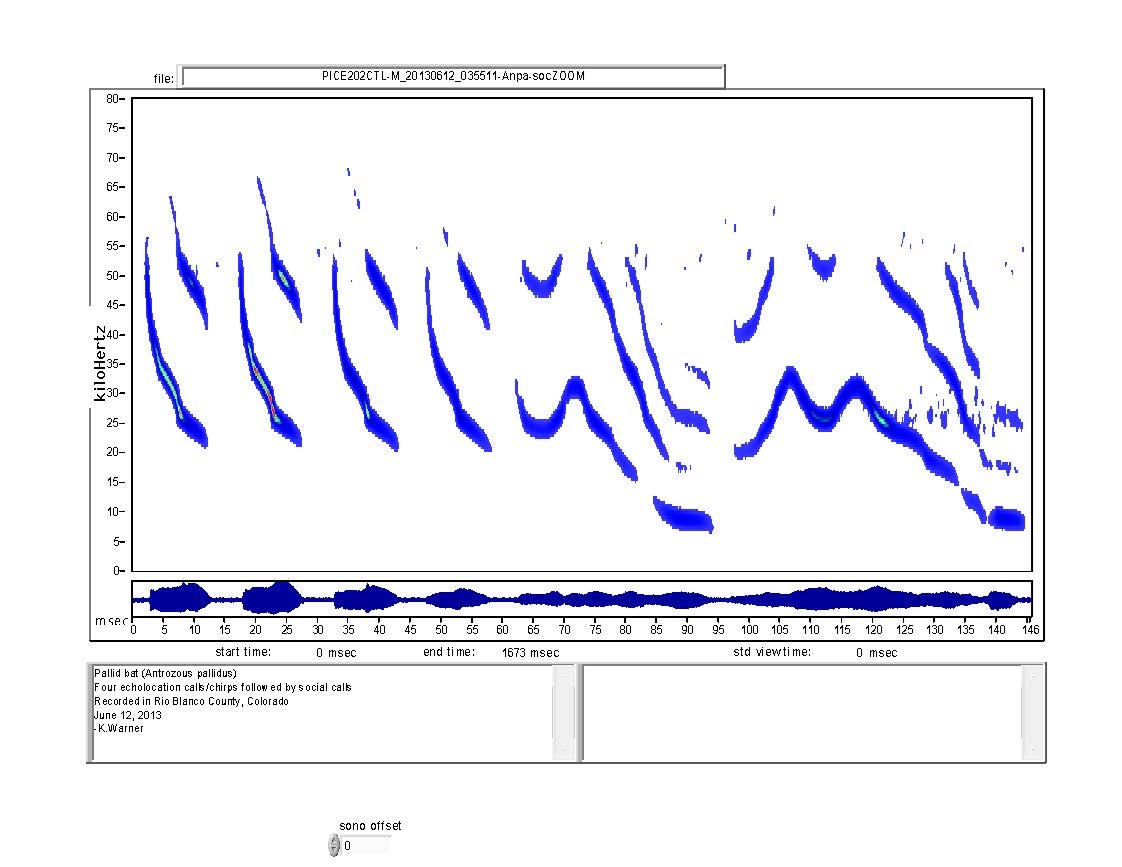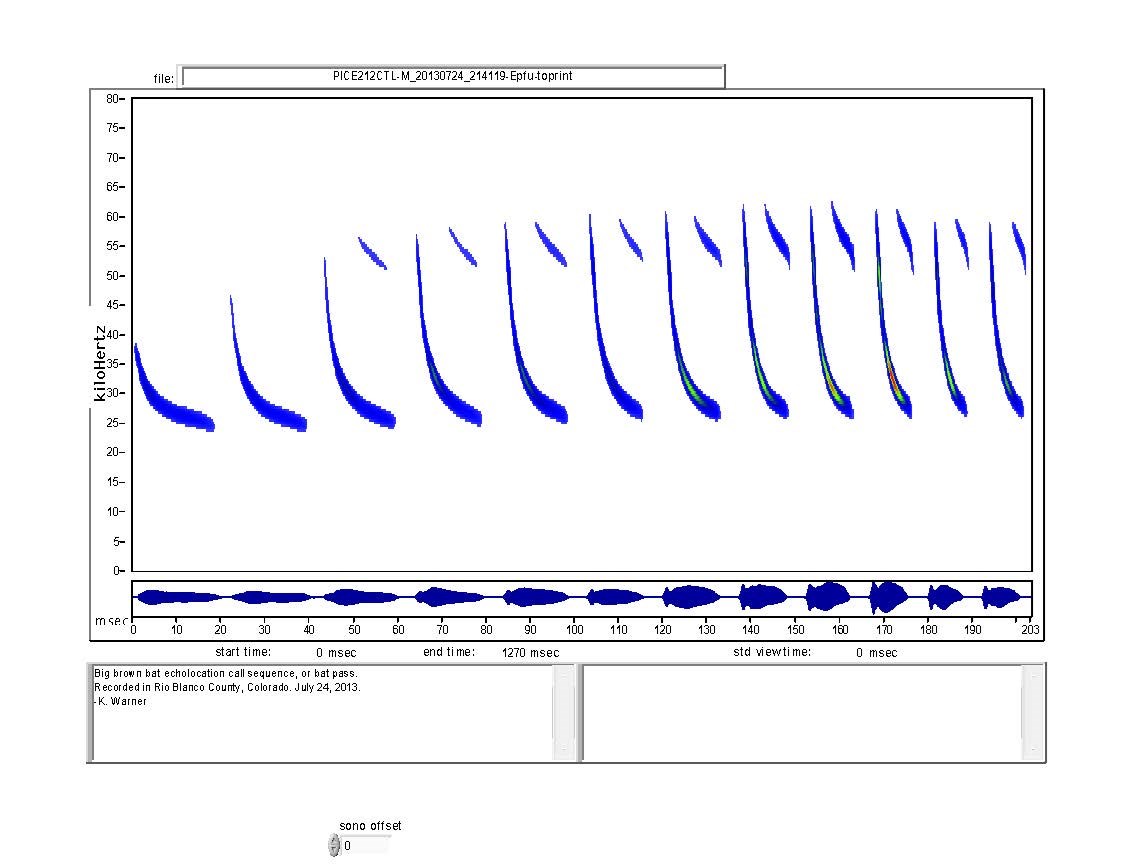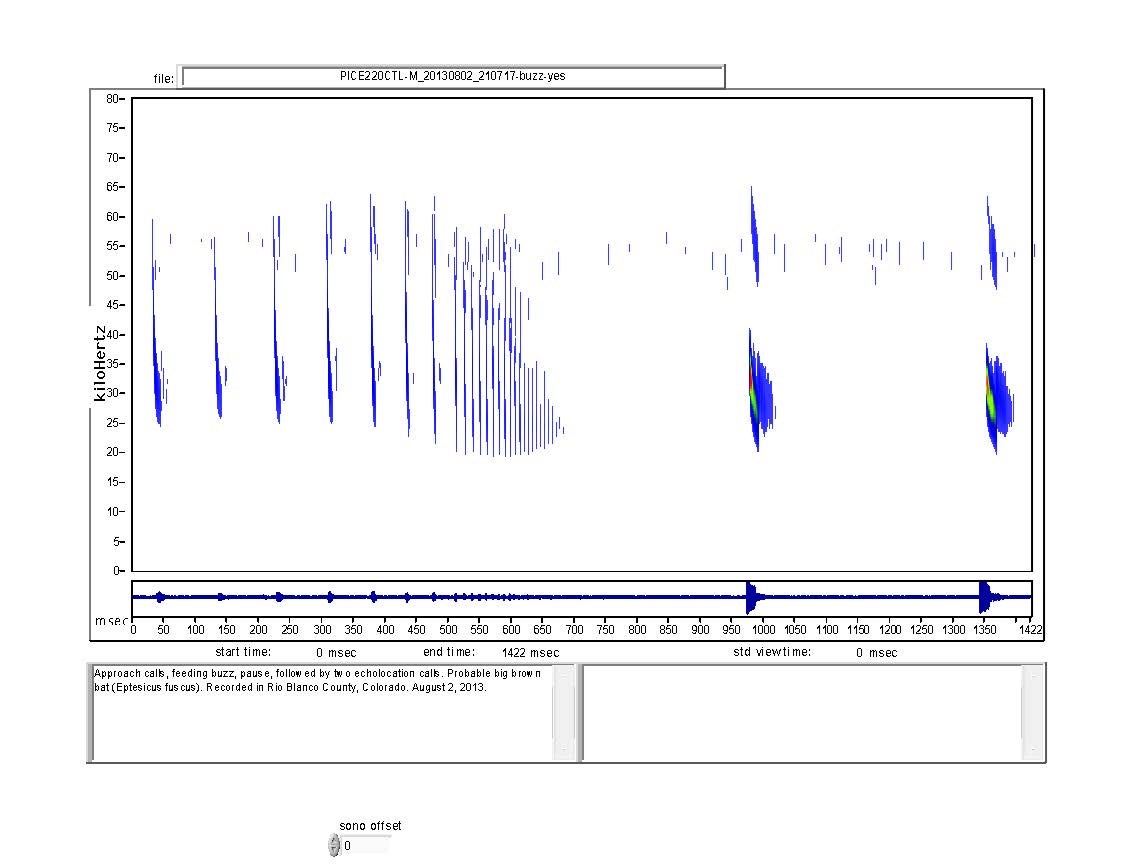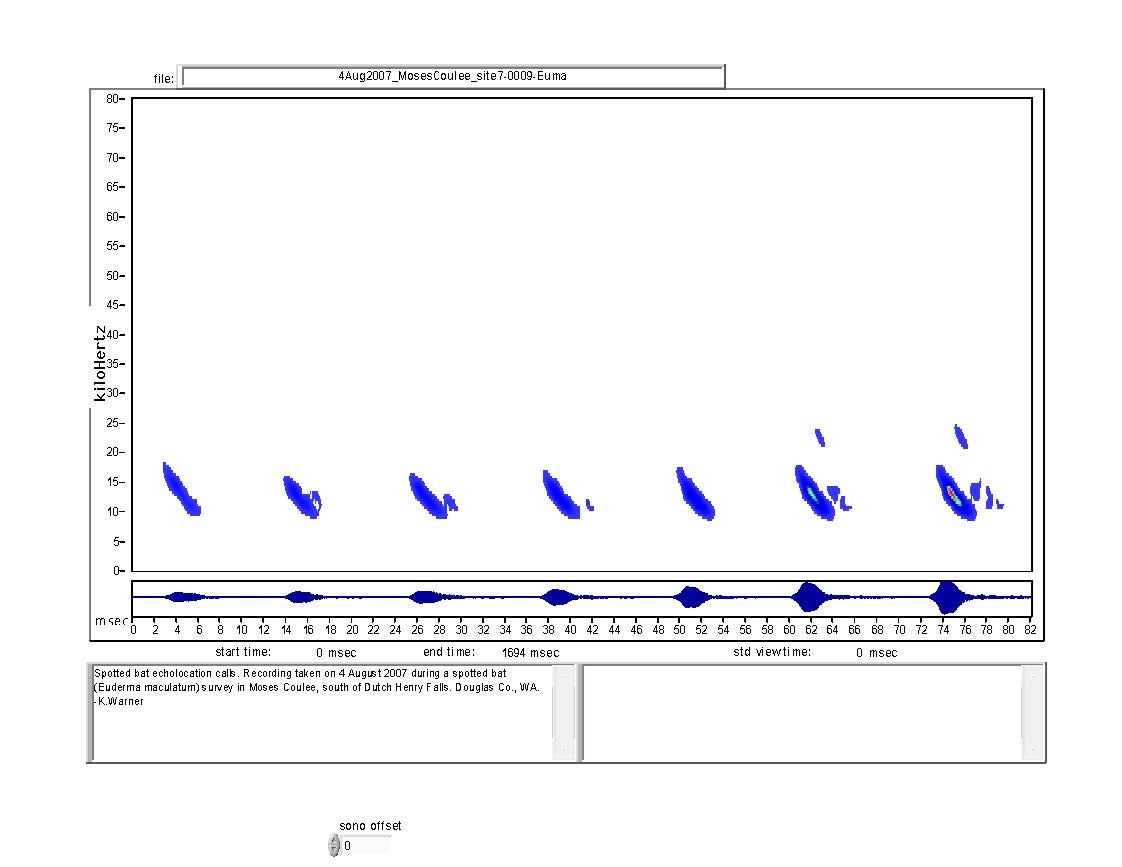Bats navigate and find insect prey using echolocation. They produce sound waves at frequencies above human hearing, called ultrasound. The sound waves emitted by bats bounce off objects in their environment. Then, the sounds return to the bats' ears, which are finely tuned to recognize their own unique calls. Scientists and managers can identify and study bats by recording their calls with specialized microphones and recording devices. The bat calls can be translated into forms humans can see and hear.
For example, bats use echolocation when they're hunting. You can call it a "feeding buzz," and it works like this: When a bat detects an insect it wants to eat, it produces a rapid series of calls to pin-point the exact location of its prey, the swoops in, and GULP! - dinner.
Bats can change their calls for different purposes. They have different searching, feeding, and social calls. And each species of bat has its own unique call pattern. Listen to the calls below, following along with the spectrograms, the graphs of the sounds made by bats that show the frequencies of sound waves over time. Can you hear the difference?
-
Pallid Bat
In this recording, the pallid bat (Antrozous pallidus) makes both echolocation and social calls. The audio is slowed down 10 times so the human ear can hear it, and the spectrogram below is a graphic representation of the sounds.
- Credit / Author:
- Katy Warner/CSU
- Date created:
- 04/14/2016

-
Big Brown Bat
This big brown bat's (Eptesicus fuscus) echolocation call sequence was recorded in Rio Blanco County, and the spectrogram is below.
- Credit / Author:
- Katy Warner/CSU
- Date created:
- 04/14/2016

.

-
Spotted Bat (Real-time)
The spotted bat (Euderma maculatum) is actually faintly audible to humans with good hearing. Can you hear this echolocation call?
- Credit / Author:
- Katy Warner/CSU
- Date created:
- 04/15/2016

-
Spotted Bat (slowed down)
This is another recording of a spotted bat's echolocation call, but it's 10 times slower so humans can hear it. The spectrogram, above, is the same for both.
- Credit / Author:
- Katy Warner/CSU
- Date created:
- 04/15/2016
Last updated: October 17, 2024
